Last updated on 4/7/24
View My Guestbook
Sign My Guestbook

Last updated on 4/7/24
Site established on 3/22/01
|
|
121st Assault Helicopter Company - "Soc Trang Tigers, Vikings"
|
Click here to visit the 121 AVN Association | ||
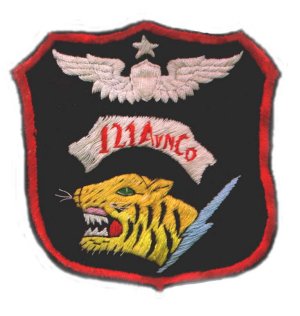
The Soc Trang Tigers Image courtesy of Patrick Kelly, 121st 64/65 |
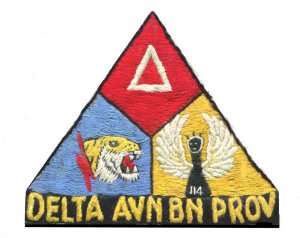
The Delta Aviation Battalion Provincial Image courtesy of Patrick Kelly, 121st 64/65 |
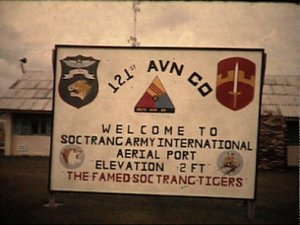
Image courtesy of ? via Forrest L. Webb |
|
These pictures show the signs that welcomed visitors to Soc Trang Army Arifield. There was another sign that said "Elevation plus or minus 3 feet" but it was just to impress the tourists. I do not recall the Warriors having a similar sign, but they might have. Image courtesy of Donald Jackson |
Me in front of the famous Soc Trang airfield sign, which changed over the years. I was there from early 64 to early 65 Image courtesy of Patrick Kelly, 121st 64/65 |
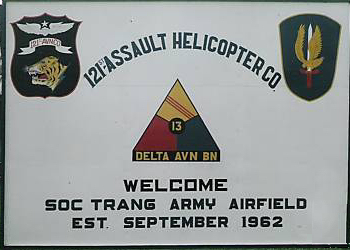
|
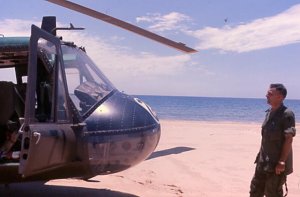
One of my jobs as a maintenance ocifer was to go up north and pick up old wrecks as replacement wrecks for our wrecks that just refused to fly any longer. Yep that's right. Soc Trang was at the very bottom of the food chain. and if it had a cyclic we flew it. Wounds and all. We were happy to get anything that slightly resembled a helicopter. This pic was taken on one of those trips. At a base south of I corps. (I think) Anyway one of my class buddies had his hutch right on the beach and I would lay over there before heading back to Soc Trang. Taken at Chu Lai Image courtesy of Lowell L. Eneix |
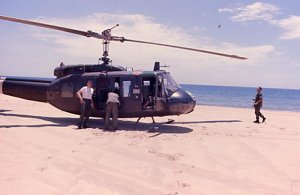
Don't know the names. On left is my LT. FNG. My boss in the hanger, my PP in the air. And 2 tech insp's. Taken at Chu Lai Image courtesy of Lowell L. Eneix |

A close up of the crew. Taken at Chu Lai Image courtesy of Lowell L. Eneix |
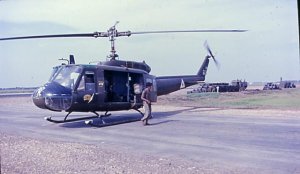
121st Bird on the airstrip during 68 tet. Image courtesy of Lowell L. Eneix |
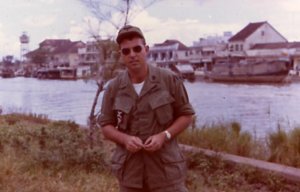
Dam I am good looking aint I? And not very conceited either. At my feet are a couple of VC that have bought the farm. - Lowell Eneix Image courtesy of Lowell L. Eneix |
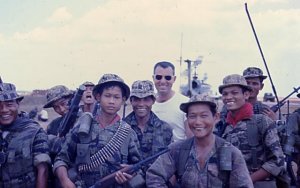
ARVN Quick reaction troops dressed for battle. I'm back center. Image courtesy of Lowell L. Eneix |

Just another notch in this ole war birds skin. Notice the other patches over my left shoulder (Note triangle tactical marking for the 121st on tail boom). Image courtesy of Lowell L. Eneix |
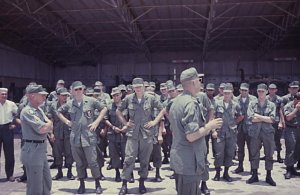
This is Maj Miller with shoulder to camera. We usually had an update briefing about noon every day. The man in white shirt was a civilian contractor sheet metal man. He patched all the holes. The hard striper with his arms crossed. I only remember as Buddha. Not a hair on his head. And knew that Huey better than I did. Taught me a lot of stuff. Sad to say I can't remember any more names Image courtesy of Lowell L. Eneix |
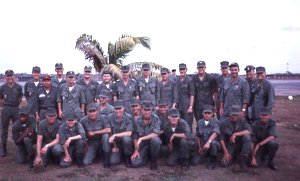
Blue tigers. GIB'S are kneeling. I remember WO Noe. Seventh guy standing from left. he's the short one with the palm tree growing out his head. I am third from right Image courtesy of Lowell L. Eneix |
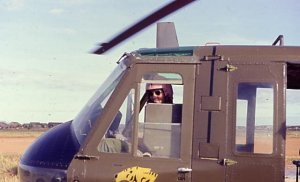
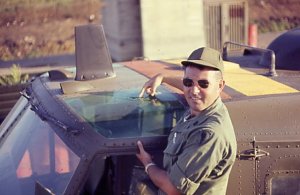
I think it really looks good. Made me stand out in a crowd. (Note Pink Flight helmet) Until a few days later when I realized it gave Charlie something to shoot at. ( I told you I am a slow thinker) Image courtesy of Lowell L. Eneix |
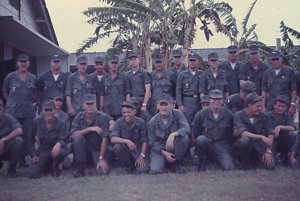
White Tigers Sorry no names. circa 67-68 post tet. GIB'S are kneeling Image courtesy of Lowell L. Eneix |
|
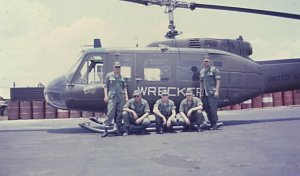
From the W in WRECKER to the R Maj Cornell, Wrecker 5, WO Eneix, Wrecker 2 dunno, dunno, Maj. Miller. Wrecker 6 best I could do with those names. Image courtesy of Lowell L. Eneix |
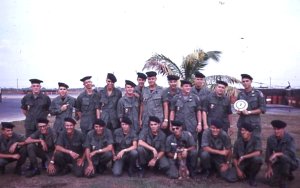
Vikings Image courtesy of Lowell L. Eneix |
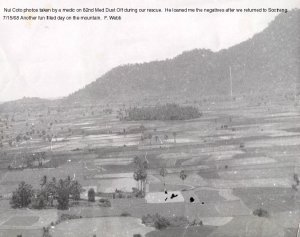
Image courtesy of Forrest L. Webb |
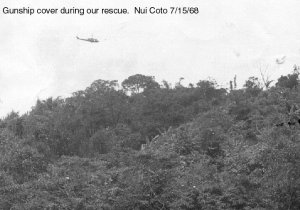
Image courtesy of Forrest L. Webb |
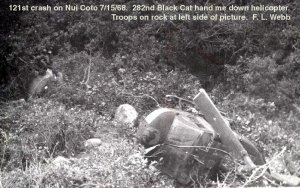
There is a good chance that Lowell Eneix ferried this bird down from the 282nd to the 121st. We received about three of these slicks (UH-1D's) from the 282nd with the black cat on the nose. None of them lasted more than two months before crashing. These photos were taken by one of the medics on the 82nd Med Det Dustoff helicopter that came to our aid. It would have been a long walk down the mountain in Indian country if they were not using a UH-1H with enough power to hover on a hot day that high up. The 82nd Med. was also stationed in Soctrang at that time Please click here for more info on this helicopter Image courtesy of Forrest L. Webb |
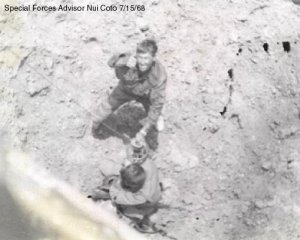
Image courtesy of Forrest L. Webb |
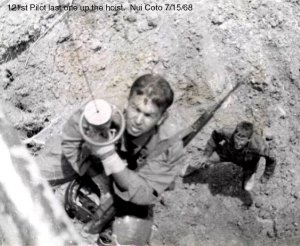
Image courtesy of Forrest L. Webb |
The guy on the right in the picture is Charles Burns, my gunner for a while on Slicks before he went to the Viking Platoon. Image courtesy of Forrest L. Webb. Additional info courtesy Shonna Burns |
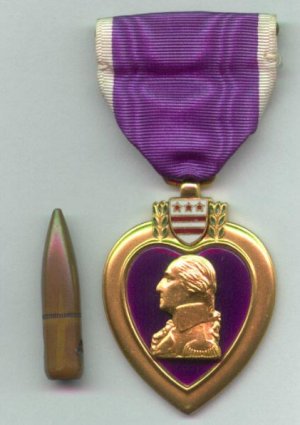
I found this bullet taped to my chest after I woke up in the hospital Japan. If you look close you can see the faint rifling mark on it. The barrel must have been all but shot out (wore out). The surgeons tape the shrapnel and bullets they remove from the patients on them as souvenirs so they won't get lost. You're laying there naked and you don't have any pockets to place them in! The Purple Heart I received was a left over Coffin Box type WWII medal. They made up an extra 500,000 Purple Hearts in 1945 in anticipation of invading Japan. Image courtesy of Forrest L. Webb |
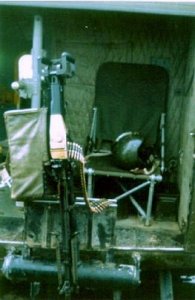
Slick gun Image courtesy of Forrest L. Webb |
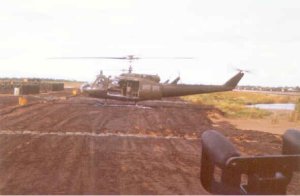
Image courtesy of Forrest L. Webb |
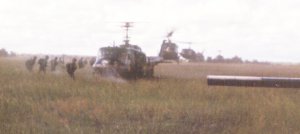
Image courtesy of Forrest L. Webb |

Changing blades at Soc Trang. Guns went through a lot of blades.67-68 Image courtesy of Lowell L. Eneix |
The serpentine canal in the top picture, and the five canal intersection in the lower picture, were used as navigational landmarks in the delta. One of our helicopters had something that we called a "Decca Plotter" above the dashboard that rolled a strip map as it flew. I do not remember the tail number, but it was a Blue Tiger bird. Click here to read more Image courtesy of Donald Jackson |
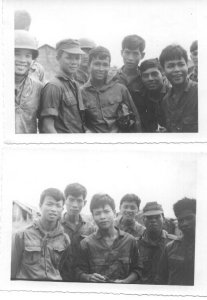
These two pictures are some of our allies before an assault. In June of '67, we lifted troops into what turned out to be a major battle with a viet cong main force unit. These were hard fighting troops on both sides, and the morning after the battle, we and the Warriors (336th AHC) took 30 helicopter loads of dead Arvn soldiers, about 14 to a helicopter, back to Vi Than. After we unloaded on my first trip, an old Viet Namese gentleman walked up to the pile of dead that had just been unloaded from my ship. He was dressed in what I thought was a Korean outfit, White shirt and trousers, Black sash and lacquered Black hat. He was crying pitifully, and tears were flowing off the end of his wispy white goatee. I thought "What a picture this would make." But I could not bring myself to point my camera at him. I felt that this would profane his grief. Image courtesy of Donald Jackson |
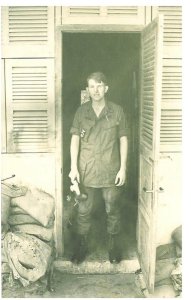
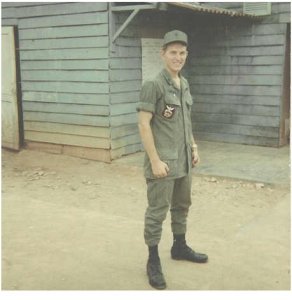
Forrest L. Webb Image courtesy of Forrest L. Webb |
Three of these photos show dammage sustained on various missions. The upper left and lower right occurred in June, 1967, the upper right in April or May of '67. I do not remember the tail numbers of the aircraft involved. I think that the lower right photo involved someone getting shot in the foot. Click here to read more Image courtesy of Donald Jackson |
|
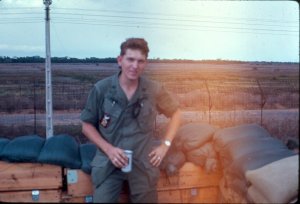
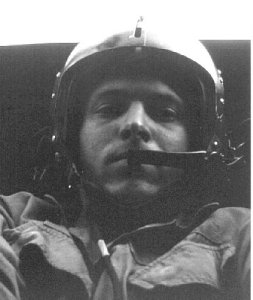
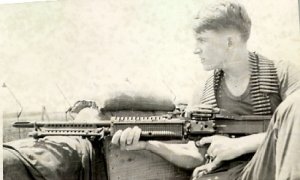
I was with the 121st AHC at Soctrang in the Delta from Jan. 3, 1968 to July 2nd, 1969. I spent Feb. and March 68 in the hospital in Japan. I stopped a bullet the first day of TET 68 and spent two months in Japan recovering. I was a slick crew chief and gunner Image courtesy of Forrest L. Webb |
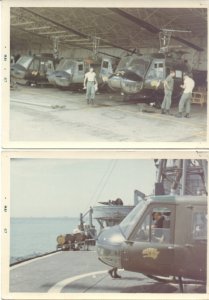
Maintenance Click here to read more Image courtesy of Donald Jackson |
|
|
These two pictures show a light fire team of Vikings leaving their revetments at Soc Trang . The revetments accross the runway were used by the 121st's Second Airlift Platoon, aka White Tigers. The helicopter in the foreground is the 80th Transportation Detachment's "Wrecker" which carried a maintenance crew to the stagefield when we were conducting assault operations. Click here to read more Image courtesy of Donald Jackson |
These pictures show our flight coming in to pick up troops for a Regional Forces/Popular Forces mission, i.e. trying to put them in contact with the enemy. On one trip into this pickup zone, the troops on my side of the ship suddenly drew back and went around to the other side to load up. There was a large cobra pinned under the left skid! I told the aircraft commander, and asked him to lift high and fast when he came up. He did, but I am not sure that he believed me. Click here to read more Image courtesy of Donald Jackson |
The pictures are, clockwise from top left: CWO Gary Dowler, at the controls of 64-13663 (The Honey Bucket), March,1967; 64-13663 being reassembled after a Periodic (100 hour) inspection, November, 1966: hootch occupied by 80th Transportation Det., November, 1966; and Duffy, the 80th Trans. Det's. mascot, November, 1966. Duffy was still in the unit when I left Soc Trang in 1968. Click here to read more Image courtesy of Donald Jackson |
|
This was April or May of 1967, I am receiving my 1st Air Medal, with 1st-7th oak leaf clusters. The awarding officer is Col. Harper. Click here to read more Image courtesy of Donald Jackson |
My favorite picture of me, taken at Soc Trang Army Airfield on February 26th, 1968. It was my 21st birthday. Image courtesy of MSG Donald W. Jackson |
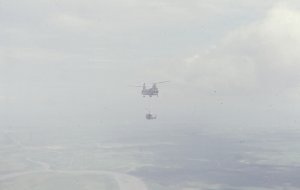
Same helo headed for Soc Trang after we rigged her for sling load. Don't know the call sign of the Chinook. Image courtesy of CWO2 Lowell L. Eneix |
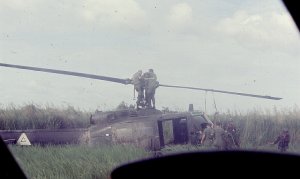
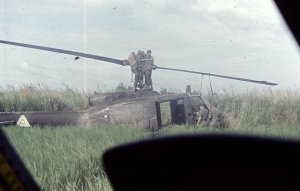
Maj Miller with flack jacket and spec. LeBouef on top setting up the rigging. From the time the mayday call came in to the time she was in the air. About 20 Min. Smoothest recovery we ever had. Couldn't take pics while the Chinook was hooking up, had to keep my hands on the controls. Just a little windy under that chopper. Don't know the names of the men on the ground. 121st Helicopter lost tail rotor during a combat assault in the delta. Pretty sure it was after the 68 tet Image courtesy of CWO2 Lowell L. Eneix |
These photos were taken in the Blue Tiger Hootch in 1967. The top shows Dale Lindholm, San Fransisco, Ca. area. The bottom is Victor Garcia, Salt Lake City, Utah. Image courtesy of MSG Donald W. Jackson |
|
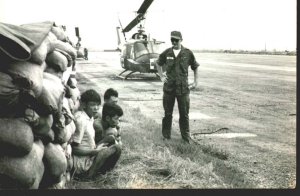
Me with some VC prisoners Image courtesy of Patrick Kelly, 121st 64/65 |
Here is the only picture I have left. This was taken in 1969, I was a doorgunner for the 121 ST AHC in Soctrang down in the delta. Hey , It was a great outfit with lots of good memories Image courtesy of Gene Veloni |

Image courtesy of Jan Null |
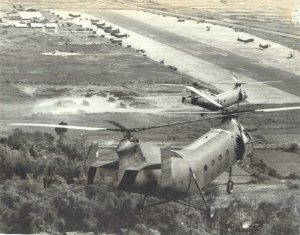
They are making their approach over what we called the "Tigers Tail" (Tree line) Image courtesy of unknown source via Forrest L. Webb |
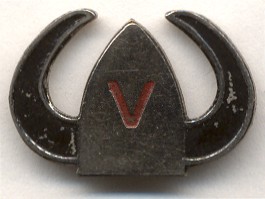
Vietnamese made 121st AHC Vikings "beercan" crest. Our gun ship platoon was called the Vikings. Image courtesy of Forrest L. Webb |
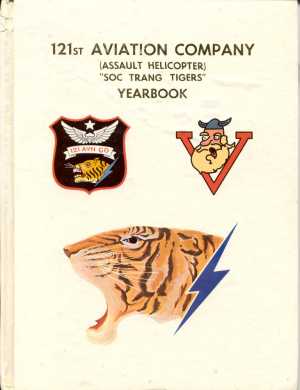
121st AHC 1969 Yearbook. Image courtesy of Forrest L. Webb |
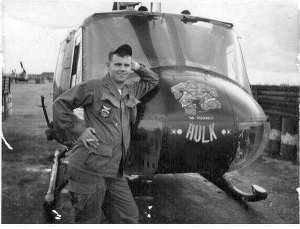
Here is a picture of my dad when he was the pilot of the "Hulk" helicopter at 121st. Lt.William G. McQuade in 1967 Image courtesy of Julie McQuade |
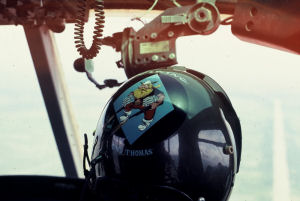
121 AHC Viking Gun platoon crew had local artist paint the Viking and name on the helmet. Viking crew also wore black T shirts and usually had tailored pants to look sharp. There was a very high level of pride being selected to be a Viking. Image courtesy of George Quackenbush |
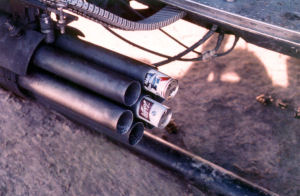
After a hard day of flying there is nothing like a little refreshment. No Tequila shooters here. Crew Mike Dewey, C/C and George Quackenbush, Gunner (1969) Image courtesy of George Quackenbush |
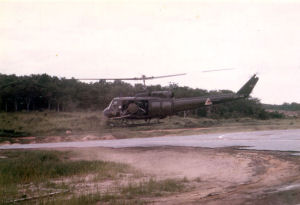
121 Tiger defoliating the road edges near Vietnamese prison on island off the western coast of South Vietnam. Image courtesy of George Quackenbush |
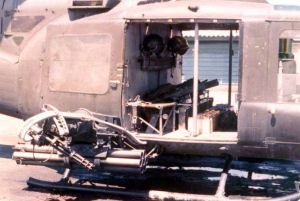
121 AHC Viking Prepped and ready for mission. Every thing organized and in it's place. Crew Mike Dewey, C/C and George Quackenbush, Gunner (1969) Image courtesy of George Quackenbush |
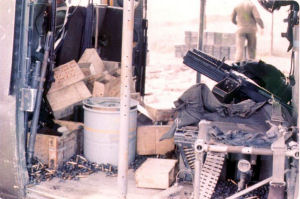
121 AHC Viking after hot mission. Everything empty and out of place. Crew Mike Dewey, C/C and George Quackenbush, Gunner. (1969) Image courtesy of George Quackenbush |
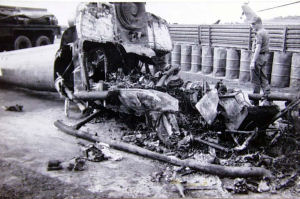
121 AHC UH-1H at Soc Trang after being struck by mortar / rocket. Jet fuel, oil and magnesium make a fine fire. The magnesium burns so hot and bright that eyes can be damaged from looking at the fire. TET 1968 Image courtesy of George Quackenbush |
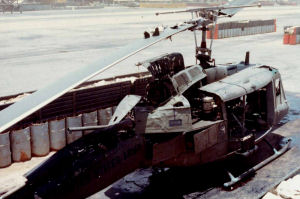
121 AHC UH-1H after direct hit from mortar round during TET 1968. Mortar attacks were a daily occurrence for more that a month during the TET offensive. Image courtesy of George Quackenbush |
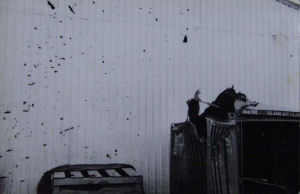
Mortar round struck a storage connex next to the 121 AHC hangar at Soc Trang during the 1968 TET offensive. All hangar ventilation was appreciated as the weather was very hot. Image courtesy of George Quackenbush |
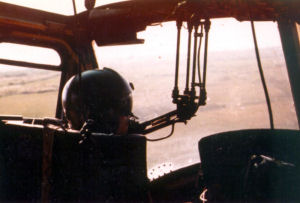
121 Viking office. The parallel bars in the co-pilot's hand is the sight for the Mini-Gun system. These guns had the capability of firing 6,000 rounds per minute (100 per second) but were reduced to 2,400 each until one hit an inboard stop, then the operating gun went to 4,000 rounds per minute. The Mini-Guns were limited to 3 second bursts to prevent the barrels from melting but by releasing the trigger and pressing again, you could get two bursts that sounded as one. The helicopter carried 4,000 rounds per gun. Image courtesy of George Quackenbush |
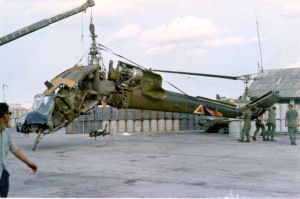
The Tail rotor was the weak link to these helicopters, requiring an X-Ray inspection each 100 hours. The gunships were stressing the tail rotor more than any other mission during NOE and attack maneuvers. Image courtesy of George Quackenbush |
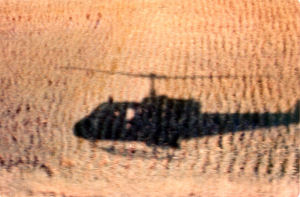
The Viking gunships flew, except for ferry to operational areas, from 10 to 50 feet AGL using terrain masking and constant course changes and suppressive fire for protection. You were not low enough if you never got green stains on the skids! Image courtesy of George Quackenbush |
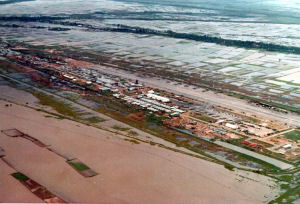
The airfield at Soc Trang resembled an aircraft carrier during the monsoon season. Surrounded by rice fields, when the flooding started, the thousands of rats would look for high ground. Image courtesy of George Quackenbush |

Somewhere in the Delta everyone wanted to be able to step out of their house and be in their field. Image courtesy of George Quackenbush |
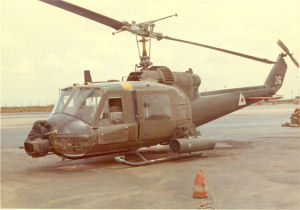
With 19 shot rocket pods on each side and a 40 mm grenade launcher in the nose was the Viking Hog. The vibrations set up by the grenade launcher and the weight caused the nose to crack. Image courtesy of George Quackenbush |
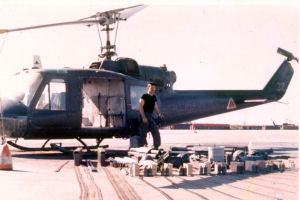
121 Viking load carried on all missions. Every flight was over gross weight limits. Normal load consisted of 2 rocket pods with 14 rockets, 2 mini-guns with 8,000 rounds, 2 M-60 machine guns with 2,000 rounds, 2 M-14 rifles with 200 rounds, 20 smoke grenades, smoke pot, chicken plates for all, ice cooler with drinks (beer at the bottom) C-rations, small tool box and goodies like CS / CN gas grenades, White Phosphorous and HE grenades, flares and occasionally a home made bomb made of a .50 cal. ammo can with a stick or two of C-4 and old nuts, bolts and screws with an HE grenade inside with the spoon outside to get it lit up. Image courtesy of George Quackenbush |
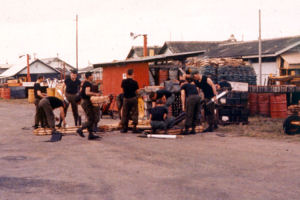
121 Viking flight line. The rockets came in wooden boxes, 3 rockets to a box, with the warheads separate from the motors. The proper way to assemble the warhead to the motor was to clamp the motor in a fixture and, using a torque wrench, tighten the warhead. As many rockets as were fired, this would take hours so they were "torqued" by screwing in the warhead until snug then loosing a quarter turn and snapping then with wrist movement, using inertia, to tighten. When assembling the rockets, the Vietnamese always left the area in a panic as we would be tossing them to one another to store. The rockets were harmless as long as a grounding wire was in place. The warheads needed rotation to arm and would not explode until they had flown several hundred feet. The wood from the rocket boxes was used to build walls in the hooch's, make closets, shelves, etc. Soc Trang 1969 Image courtesy of George Quackenbush |
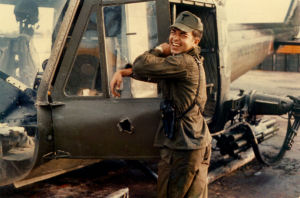
121 Viking after being hit with major caliber round. This is exit hole. The round went just over the pilot's hand, cut the co-pilot seat webbing, left a mark on the co-pilot's shirt and a welt on his back. One millionth of a knot slower airspeed and the pilot would have been an invalid. Valhalla did not want him yet. (1969) Image courtesy of George Quackenbush |
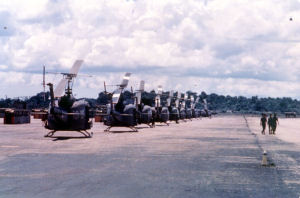
Soc Trang during a major operation. During lull, the helicopters were nearly covering the available parking space until two helicopters mixed blades and cleared a spot for 3 more. (1968) Image courtesy of George Quackenbush |
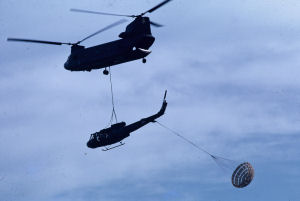
CH-47 sling loading a 121 AHC UH-1H after being heavily damaged when rotor blades mixed with another helicopter (1968) Image courtesy of George Quackenbush |
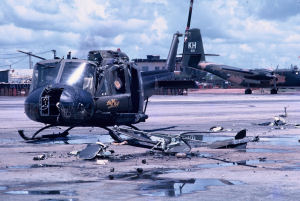
121 AHC Tiger UH-1H at Soc Trang after mixing main rotor blades. Parts from the two helicopters that mixed blades cut a main rotor control tube of a third helicopter and caused one main rotor blade to be free of any pilot control which cut off the tail boom. (1968) Image courtesy of George Quackenbush |
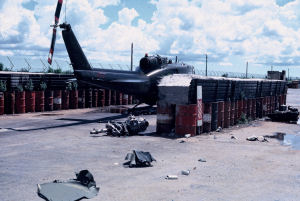
Dust-off UH-1H at Soc Trang after main rotor blade strike with 121 AHC Tiger. Mechanic was taking tail rotor track with grease pencil when the 121 bird hovered overlapping the blades. This was the worlds quickest transmission removal! The main rotor flew across the runway, hit a Viking revetment, crossed a drainage ditch, went between several buildings and finally came to a rest among the Vietnamese ladies washing clothes and shinning boots. Only casualty was the mechanic when the tail skid of his helicopter struck his foot. (1968) Perfect example why the helicopter (American and German) should be rolled to the right when ditching. Parts are pulled out instead of pushed into the cabin. Image courtesy of George Quackenbush |
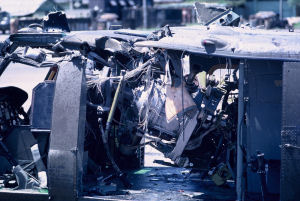
121 AHC Tiger UH-1H after overlapping blades with a Dust-Off bird and mixing main rotor blades at Soc Trang. Co-Pilot had to repaint his helmet after this mishap. (1968) Perfect example of why helicopter (American and German) should be rolled to the right when ditching. As this struck on the left side, the parts came into the cabin instead of being pulled out. Fortunately there were no pax in the helicopter at time of mishap. Image courtesy of George Quackenbush |
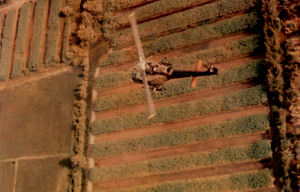
This is typical altitude at which the Viking Gunships flew using terrain features for protection. When enemy fire was received a smoke grenade was tossed from the helicopter to mark the spot so the lead helicopter could turn and set up an attack against the most likely area where the enemy could hide. At very low levels the area from where the fire was coming from was usually quite small. (1969) Image courtesy of George Quackenbush |
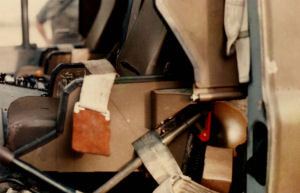
God takes care of Babies and Drunks. Add to that list the Vikings. The co-pilot sitting on this office chair only got a welt on his back when a .51 caliber round came through his office and cut the webbing on his seat and exited the door making a 4 inch hole in it as it left for parts unknown. These close calls were common. A boot heal shot off, a round hitting dead center of a chicken plate and only knocking the wind out, a round hitting an engine turbine flange that, because of the clamp and additional material, did not have enough power to completely penetrate or a major round going through a door, firewall and into the transmission and only running out of oil on short final to Soc Trang. The Gunner was lying an the ammo trays resting or he would have caught it dead center in the bread basket. (1969) Image courtesy of George Quackenbush |
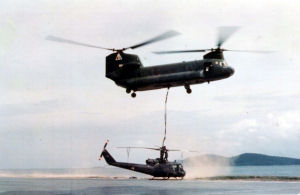
Failure of Main Rotor trunnion bearing required this Viking Gunship to be slinged from the Island of Phu Quoc where they were giving support to a "Slick" that was equipped with spray tank to apply defoliant to vegetation on roadside from the port and airport to the internment facility for enemy combatants. The trunnion failure was fairly common as the helicopters were always making banking / turning maneuvers and always at or near maximum gross weight. (1969) Image courtesy of George Quackenbush |
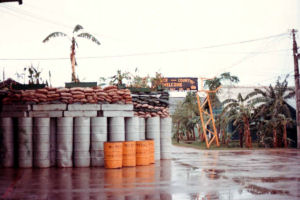
This was bunker that was built during the first days of the 1968 TET offensive to provide protection for the maintenance crews from mortar attacks. This became my home for a month while working dawn to dusk, hiding in it during mortor attacks and sleeping in it on litters when not out patching holes in rotor blades. Image courtesy of George Quackenbush |
|
Hand made 121st patch made by Moma-san in Soc Trang. Image courtesy of Forrest L. Webb |
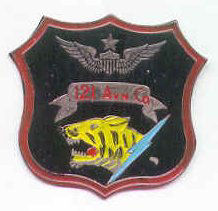
Image courtesy of Forrest L. Webb |
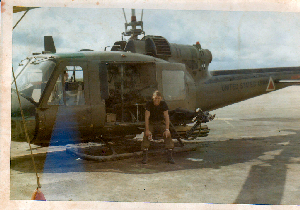
That's we with a Viking gunship I was a door gunner on in 1969. Image courtesy of Tony Thornton |
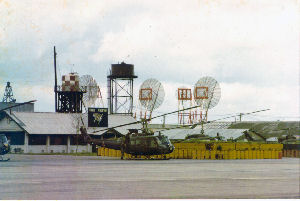
This is a photo I took of Tiger Country choppers from the far side of the field. It shows Tiger 23 being worked on. I think I took it in the June 69 timeframe...I had just bought a Mamiya Sekor 1000DTL camera but had to send my photos home to Hawaii for development. I did some developing while in Soc Trang, black and white, but it was too hot for the process to get worthy quality. I was with a detachment of the 1st signal brigade on the western fence. There were about 20 of us. We were responsible for the microwave system throughout the delta. Although the brigade had people stationed everywhere else, it seemed we were called to help them, and had to fly a lot with the 121, to Can THo, Vung Tau, Saigon, Bac Lieu, Ca Mau.... my brother and I were stationed there together, he arrived 6 months before me. I was called back to Can Tho sometime around December because they lost a lot of their expertise at the company. I remember being there for tet of 70 and ETSing shortly after that. Image courtesy of George Maguire, Long Lines signal det, Soc trang |
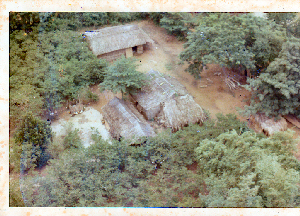
Grass hooches we flew over in the Viking gun ships - 1969. Image courtesy of Tony Thornton |
|
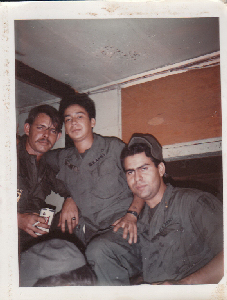
That's me on the left! I believe the guy in the middle worked in armament - 121st Vikings - 1969 Image courtesy of Tony Thornton |
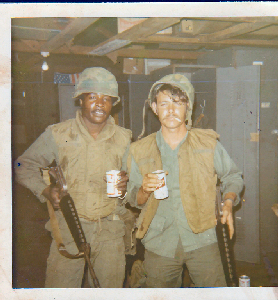
After a hard days work me and I cannot remember this guy's name - that's me on the right! 1969 Soc Trang, South Vietnam Image courtesy of Tony Thornton |
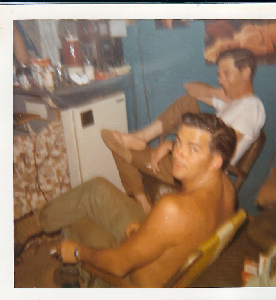
Another Qc insp. 227 aviation pleiku South Vietnam 1969. Image courtesy of Tony Thornton |

Dale Sentor from Ohio qc insp. 227 aviation in Pleiku, South Vietnam. Image courtesy of Tony Thornton |
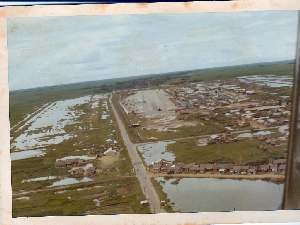
Soc trang army air field 1969. Image courtesy of Tony Thornton |
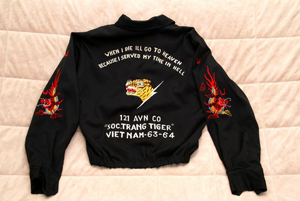
Image courtesy of Earl Williams 121st AHC via Milton Lowden |
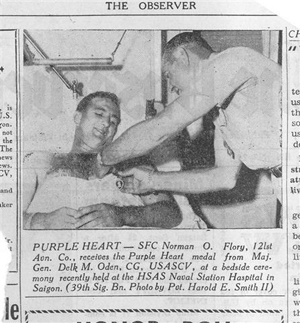
Image courtesy of Earl Williams 121st AHC via Milton Lowden |
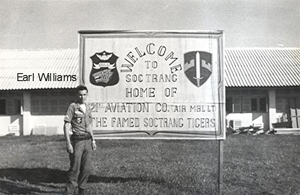
Image courtesy of Earl Williams 121st AHC via Milton Lowden |
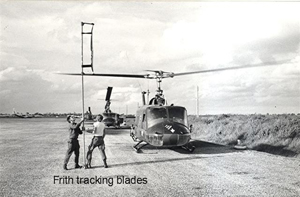
Image courtesy of Earl Williams 121st AHC via Milton Lowden |

Me in a CH-21 Image courtesy of Milton Lowden 121st AHC |
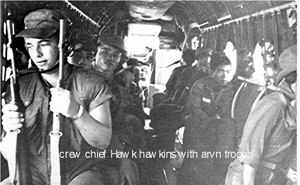
Image courtesy of Earl Williams 121st AHC via Milton Lowden |
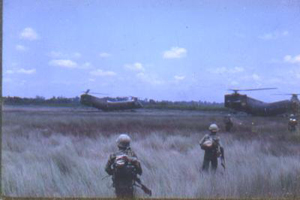
CH-21's dropping of troops Guarded by UH-1B's Image courtesy of Milton Lowden 121st AHC |

Soc Trang Airfield from the air Image courtesy of Milton Lowden 121st AHC |

First of the Huey gun ship's coming in the hanger Image courtesy of Milton Lowden 121st AHC |

Me outside the back door of barracks on my ride Image courtesy of Milton Lowden 121st AHC |

Curtis-Wright R1820-103 Cyclone supercharged 1150 hp Image courtesy of Milton Lowden 121st AHC |

The Road to Soc Trang from the Base Image courtesy of Milton Lowden 121st AHC |

Master Gun Platoon US Army Soc Trang Image courtesy of Milton Lowden 121st AHC |

Headquarters sign above CO's building Image courtesy of Milton Lowden 121st AHC |

Soc Trang Tiger Emblem Image courtesy of Milton Lowden 121st AHC |

Soc Trang International control tower Image courtesy of Milton Lowden 121st AHC |

M60 door gun 1964 the first ones Image courtesy of Milton Lowden 121st AHC |
||
All images remain the personal property of this site and the contributor of the photo. You may download them for your personal use but they may not be published or used on any other site without written permission from the webmaster and the contributor.